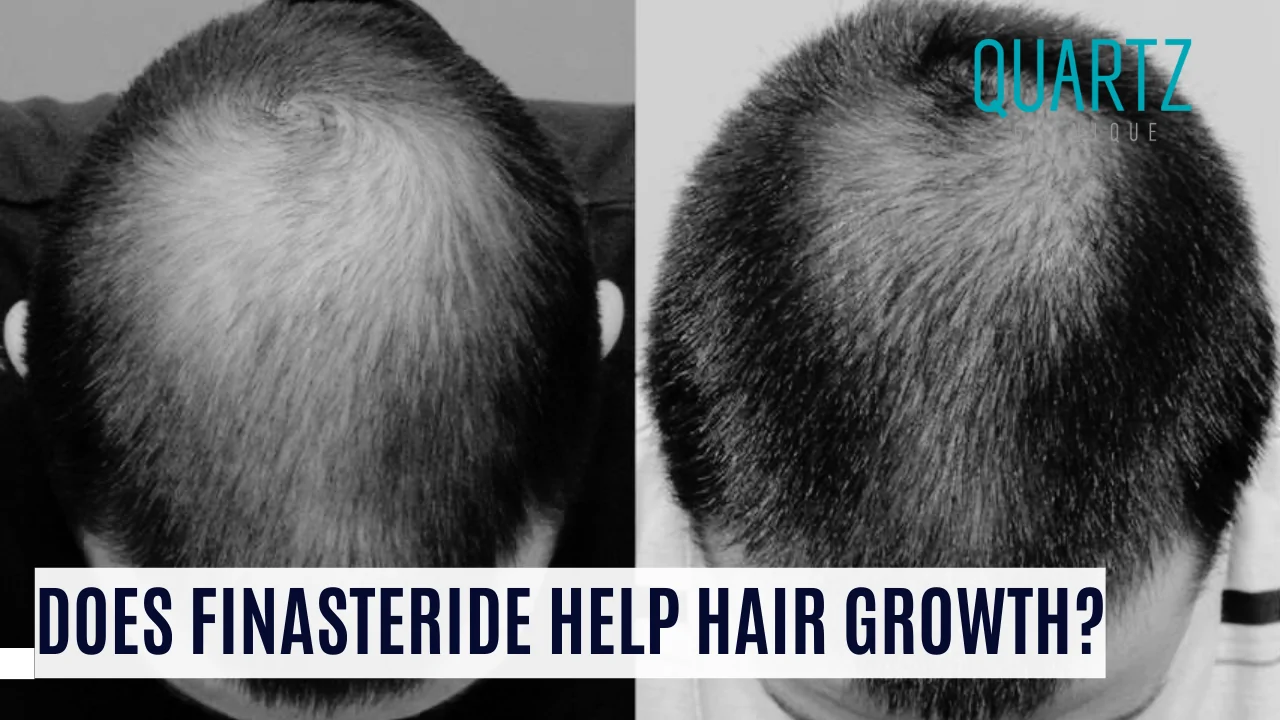Before the late 1990s, men had few effective options to combat hair loss. That changed with the introduction of Finasteride, a medication approved by the U.S. Food and Drug Administration (FDA) in 1997 under the brand name Propecia.
This daily oral medication gives men the opportunity to slow down, stop, or even reverse hair loss in certain cases. If you are experiencing hair thinning, Finasteride can be used alone or combined with other hair restoration treatments for enhanced results.
How Does Finasteride Promote Hair Growth?
Finasteride is a 5-alpha reductase inhibitor, which blocks the enzyme responsible for converting testosterone into dihydrotestosterone (DHT) — the hormone primarily responsible for male pattern baldness.
By reducing DHT levels, Finasteride prevents the miniaturization of hair follicles and helps maintain healthy hair growth.
Clinical studies confirm its effectiveness: after two years of consistent use, 83% of men treated with Finasteride experienced no further hair loss, compared to 28% in the placebo group.
Is Finasteride Worth It?
Think of Finasteride as a protective barrier for your hair.
While it may not guarantee full regrowth of lost hair, most users report significant slowing or cessation of hair loss. For those in the early stages of baldness, it may also restore density in thinning areas.
In a two-year study, men taking Finasteride showed a clinically significant increase in hair count compared to baseline levels.
When Will You See Results From Finasteride?
Consistency is key. Most patients begin noticing reduced shedding and thicker hair within 3–4 months, with visible improvements by the 12-month mark.
It’s important to note that temporary shedding may occur during the first few weeks — a normal phase as older hairs are replaced by stronger new ones.
Ways to Enhance the Results of Finasteride
While Finasteride works effectively on its own, combining it with other scientifically proven treatments can amplify outcomes and help maintain long-term results.
Combine Finasteride and Minoxidil
Finasteride blocks DHT at the hormonal level, while Minoxidil acts directly on hair follicles to prolong the growth (anagen) phase and improve scalp circulation.
Their different mechanisms make them complementary and more effective when used together.
| Feature | Finasteride | Minoxidil |
|---|---|---|
| Mechanism of Action | Blocks DHT formation by inhibiting 5-alpha reductase | Stimulates follicles and prolongs the anagen phase |
| Form | Oral tablet (1 mg daily) | Topical solution or foam (2–5% concentration) |
| Best Candidates | Men with androgenetic alopecia (DHT-related hair loss) | Men and women with thinning or diffuse hair loss |
| Expected Results | Visible reduction in hair loss after 3–4 months; peak results at 12 months | Improved hair density within 4–6 months of consistent use |
Review Your Hair Care Products
Opt for shampoos and conditioners that support hair health — free from harsh sulfates and parabens.
Products enriched with ketoconazole or saw palmetto can complement Finasteride by reducing scalp DHT levels.
You may also consider biotin-based conditioners to strengthen the hair shaft and improve texture.
Give Your Scalp Extra Care
Scalp massages can stimulate blood circulation and support hair regrowth.
Studies have shown that a 4-minute daily scalp massage over 24 weeks can enhance hair thickness.
Use gentle circular motions without applying excessive pressure to the scalp.
Maintain a Healthy Lifestyle
Nutrition, hydration, and stress management all influence hair health.
Adopt a balanced diet rich in zinc, iron, protein, and vitamin B-complex.
Avoid smoking and manage stress through relaxation or mindfulness practices to prevent telogen effluvium (temporary hair shedding).
Final Thoughts on Using Finasteride
Finasteride remains one of the most effective and clinically proven treatments for male pattern baldness.
However, it is not a miracle drug — consistency and medical supervision are essential.
For best results, combine Finasteride with complementary treatments such as Minoxidil, maintain a healthy lifestyle, and consult your physician regularly.
Under professional guidance, Finasteride can help you preserve your existing hair and restore your confidence.
Hair Transplant Turkey – Combining Medical Expertise & Natural Results
If you are looking for advanced hair restoration options, Quartz Hair Clinic in Istanbul offers world-class DHI and FUE hair transplants, performed under expert medical supervision with natural and permanent outcomes.

